History of LGC
It is said that necessity is the mother of invention. That certainly seems the case when reviewing the genesis of Local Government Data Processing Corporation (LGC). The automation problem facing local governments in the early and mid-seventies was both cost and availability. Many cities and counties recognized the need and benefits of automation, but the cost of hardware and software was beyond many local governments' budgets. Also, the rapid growth in the computer industry gave vendors all the business they needed without going to small customers in remote locations. 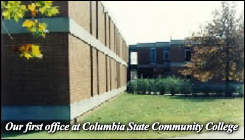
In 1973, James Cotton, Jr., a representative from the Tennessee Valley Authority, met with Ken Joines of UT MTAS (Municipal Technical Advisory Service), and Mike Kesler, Computer Center Director of Columbia State Community College (CSCC), to discuss a mutually beneficial project to provide computer services for Tennessee cities. TVA had some limited funds earmarked for this purpose, MTAS had expertise in municipal fund accounting, and CSCC had computer hardware and programmers. In a cooperative effort, they developed fund accounting software that was deployed to twenty municipalities in the Middle Tennessee area. The following year, the software and documentation was given to Jackson State Community College (JSCC) to serve West Tennessee. This resulted in deployment to fourteen additional municipalities before the total project reverted back to CSCC. Serving thirty-four Tennessee cities from the CSCC computer center soon became an obvious encumbrance to their primary mission of serving the students, faculty, and administration.
 In 1977, Local Government Data Processing Corporation became an independent entity, incorporated as a not-for-profit to serve automation needs in the Tennessee Valley, primarily in the State of Tennessee. TVA provided $50,000 and UT-IPS provided $45,000 for start-up funding. Charter board members included Charles Bilbrey, Comptroller's Office, Herbert Bingham, Director of TML, James Cotton, Jr., TVA, Ralph Harris, Director of TCSA, Gary Hensley, municipality, Ken Joines, MTAS, Mike Kesler, Director of LGC, Tom McAnulty, CTAS, and Claude Wright, SDE. The first staff consisted of Mike Kesler, John Hunt, Mickey Wilson, Sue Gilliam, and Doris O'Neal. Six presidents, Bruce D. Collier, Mickey Wilson, Mike Kesler, John Hunt, Bradley Dugger, and Vic Mangrum have served LGC.
In 1977, Local Government Data Processing Corporation became an independent entity, incorporated as a not-for-profit to serve automation needs in the Tennessee Valley, primarily in the State of Tennessee. TVA provided $50,000 and UT-IPS provided $45,000 for start-up funding. Charter board members included Charles Bilbrey, Comptroller's Office, Herbert Bingham, Director of TML, James Cotton, Jr., TVA, Ralph Harris, Director of TCSA, Gary Hensley, municipality, Ken Joines, MTAS, Mike Kesler, Director of LGC, Tom McAnulty, CTAS, and Claude Wright, SDE. The first staff consisted of Mike Kesler, John Hunt, Mickey Wilson, Sue Gilliam, and Doris O'Neal. Six presidents, Bruce D. Collier, Mickey Wilson, Mike Kesler, John Hunt, Bradley Dugger, and Vic Mangrum have served LGC.
The corporation opened for business in a small Columbia office on Penny Avenue on July 7th, 1977 with a used IBM 360 Model 30 computer.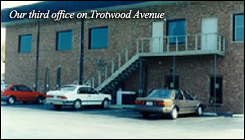 After that LGC moved to a 6,000 square foot office in a basement on Trotwood Avenue for twelve years. Then in October 1991 moved to its present 17,000 square foot facility at 714 Armstrong Lane.
After that LGC moved to a 6,000 square foot office in a basement on Trotwood Avenue for twelve years. Then in October 1991 moved to its present 17,000 square foot facility at 714 Armstrong Lane.
The first product was a batch accounting and payroll service with the addition of utility billing the second year. The product line has expanded to a full service company offering hardware, software, and related computer services. In September 2003, LGC purchased the assets of DataQuest Corporation. DataQuest had served as LGC's closest competitor for over 20 years. This acquisition included all software and the opportunity to serve an additional 160 customers. 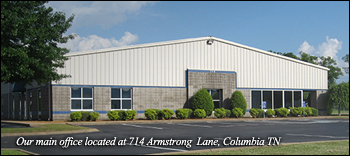 The entire staff made the transition and brought very positive technical and cultural value. The application software offered by LGC covers virtually all of the automation needs of its customers, from accounting and property taxes, to food service and court administration.
The entire staff made the transition and brought very positive technical and cultural value. The application software offered by LGC covers virtually all of the automation needs of its customers, from accounting and property taxes, to food service and court administration.
The year 2005 brought several significant changes to the company. LGC had expanded its services over 28 years to include all aspects of automation for non- profits, city, county, and state governments. To reflect the changes to these services that are currently provided by the company, the Board of Directors voted to adopt Local Government Corporation (LGC) as the company name by which to do business.
The dedication and contributions of Mike Kesler, who served as President of LGC since December l, 1988 were acknowledged at his retirement on June 30, 2005 after 17 years as President of the corporation. Mickey Wilson, who was the Executive Vice President, took on the role of President of LGC on July l, 2005 and served faithfully until his retirement on June 30, 2014. Bruce D. Collier, who was Executive Vice President, took on the role of President of LGC on July 1, 2014.
Today, LGC employs over 150 people and serves over 1,500 customers in the Southeast, including many contracted services to the State of Tennessee. Thanks to the foresight and hard work of many people and support organizations, LGC's customers are second to none when it comes to automation.
 |
| Year | Customers | Employees |
| 1977 | 33 | 5 |
| 1982 | 154 | 12 |
| 1987 | 378 | 22 |
| 1992 | 549 | 35 |
| 1997 | 722 | 93 |
| 2002 | 900 | 140 |
| 2007 | 1100+ | 125 |
| 2012 | 1300+ | 122 |
| 2017 | 1500+ | 143 |
RETIRED HARDWARE
 |
 |
 |
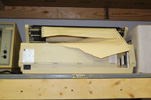 |
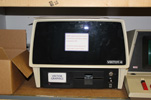 |
 |
 |
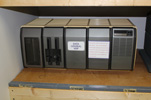 |
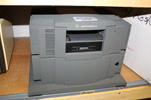 |
 |
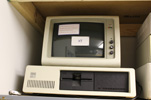 |
 |
 |
 |
 |
 |
